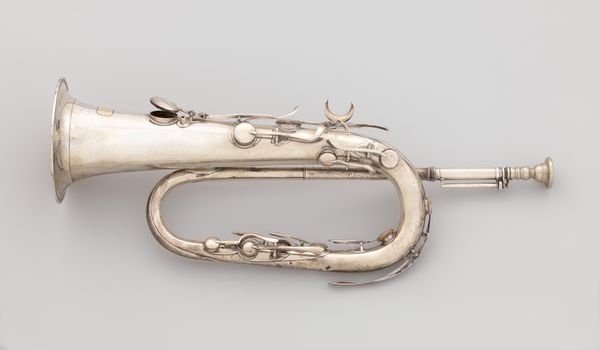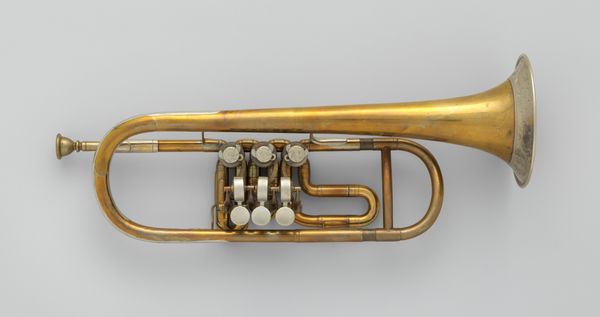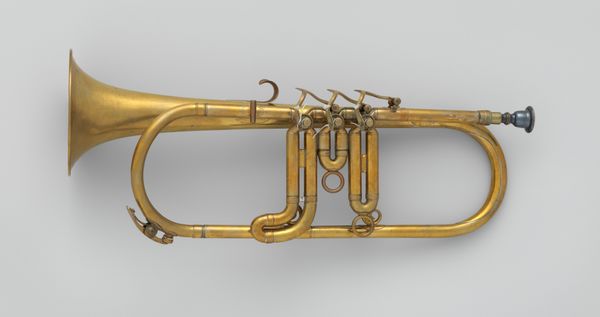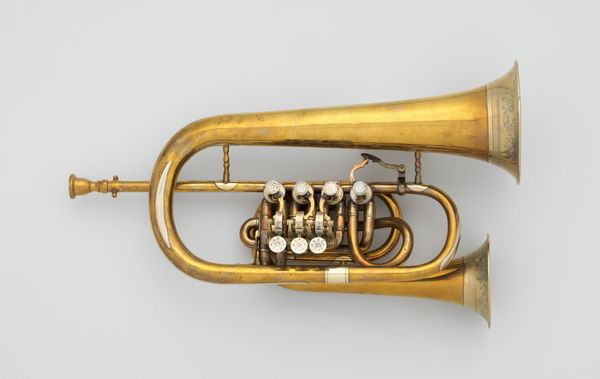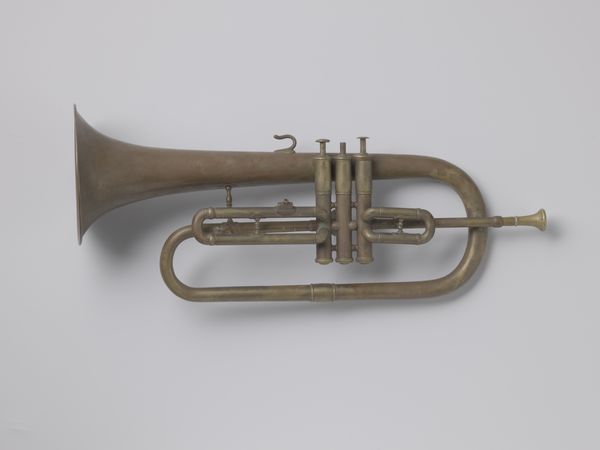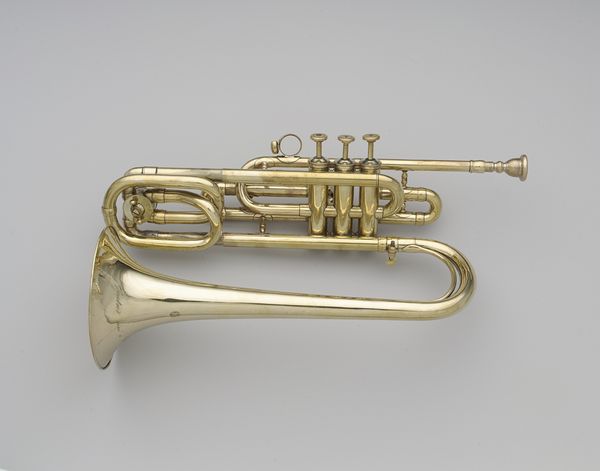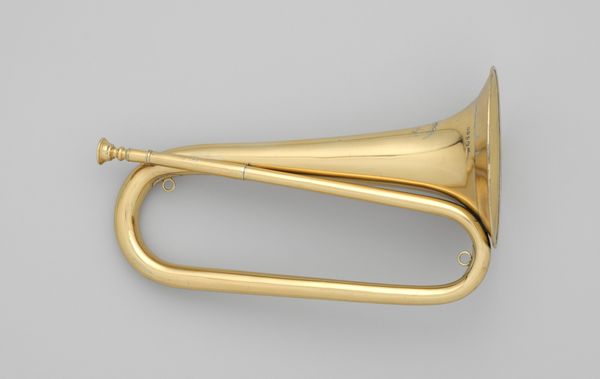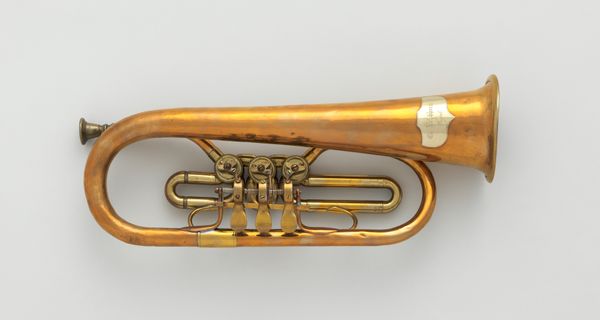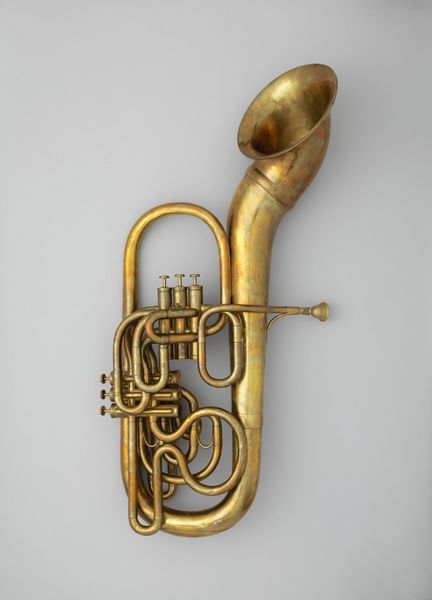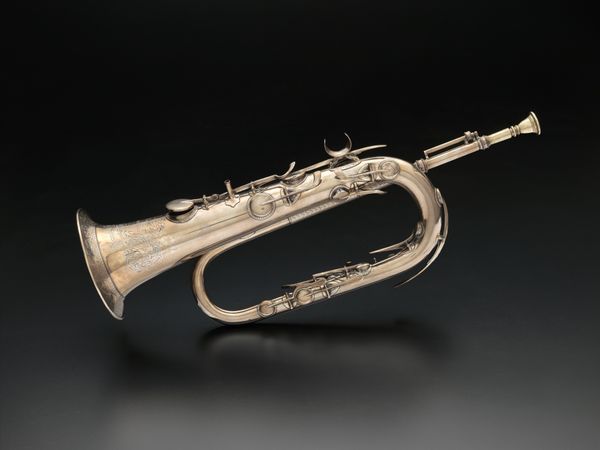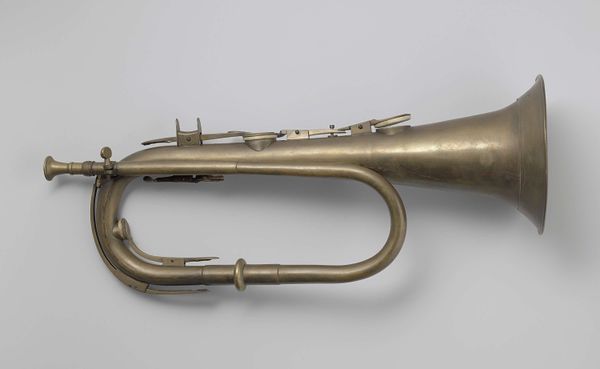
metal, photography
#
metal
#
photography
#
musical-instrument
Dimensions: Height (Without shanks or mouthpiece): 12 3/8 in. (31.5 cm)
Copyright: Public Domain
Editor: So, this is the Rotary Valve Cornet, made by Isaac Fiske sometime between 1865 and 1885. It's this shimmering silver metal, incredibly intricate. I’m immediately drawn to its polished sheen and its rather contained and coiled structure. How would you interpret this work, considering its time? Curator: That shine, that precise engineering… it speaks to an era of industrial progress and, simultaneously, to a very specific kind of societal performance. Think about the brass bands of the late 19th century. Who were they? What kinds of communities did they build? Where did they perform? Editor: I hadn’t really considered the social aspect. Were these bands a reflection of the divides and inequalities present in society? Curator: Absolutely. Music, then as now, wasn't just entertainment; it was a space where class, race, and gender played out. The cornet, as a symbol, might represent aspiration for some, while simultaneously embodying the exclusion of others. Who had access to instruments? Who was allowed to perform? What kind of music were they playing, and for whom? Editor: That's a perspective shift. I was focused on the instrument itself, its aesthetic, but now I see it as a product of social dynamics. Did the music challenge or reinforce the status quo? Curator: Both, often at the same time. It’s a powerful reminder that objects aren’t neutral. They carry the weight of history, and of social power. Thinking about that duality allows us to ask more nuanced questions about the past, and about our present too. What have you gleaned from this object? Editor: I guess I now appreciate how a seemingly straightforward object can be a lens through which we view broader social and historical themes. It’s definitely more than just a pretty instrument!
Comments
No comments
Be the first to comment and join the conversation on the ultimate creative platform.

